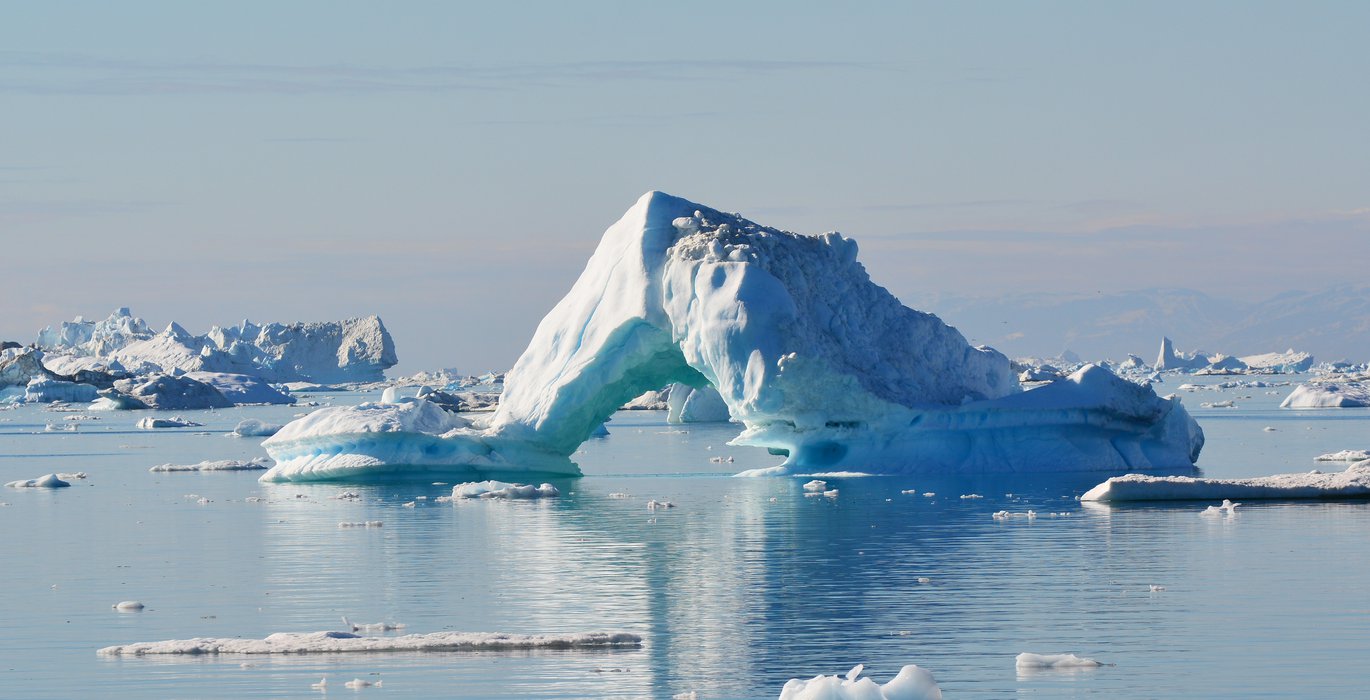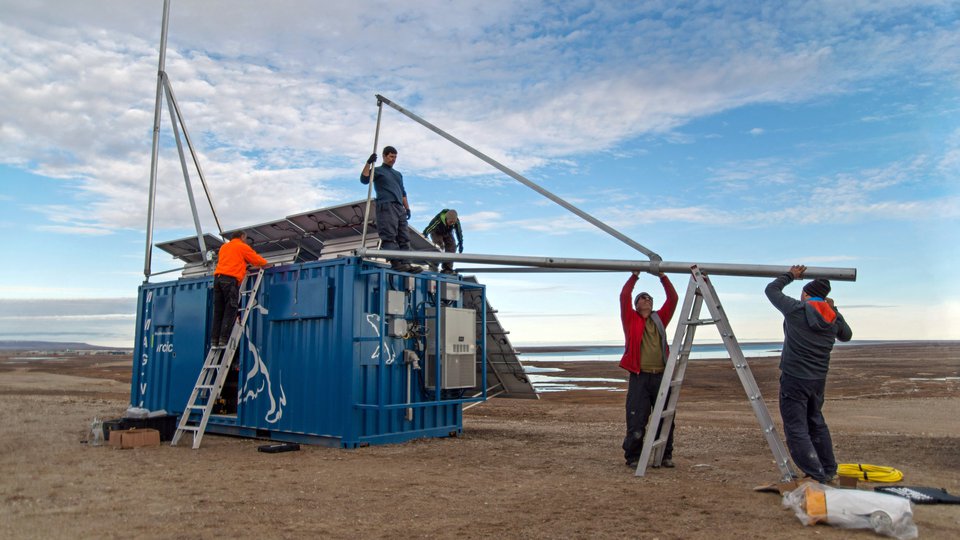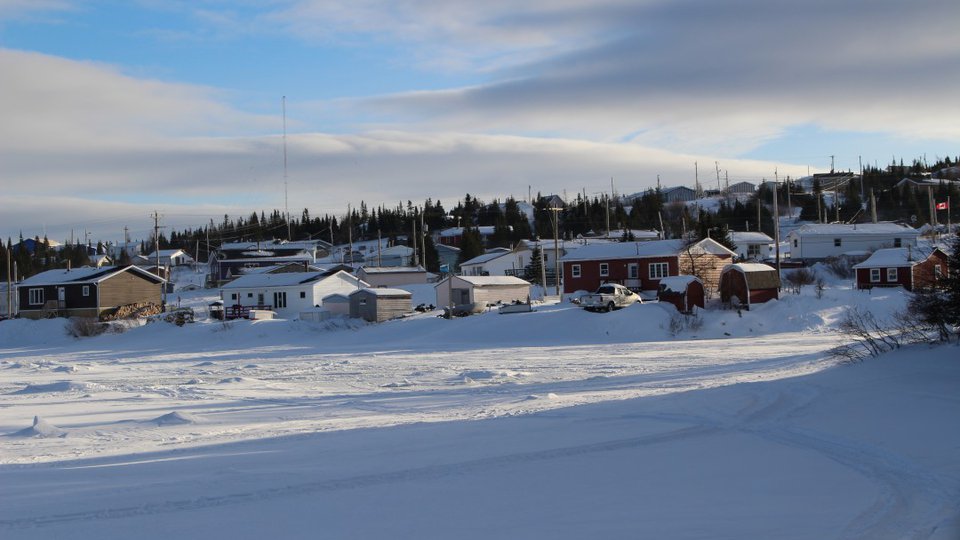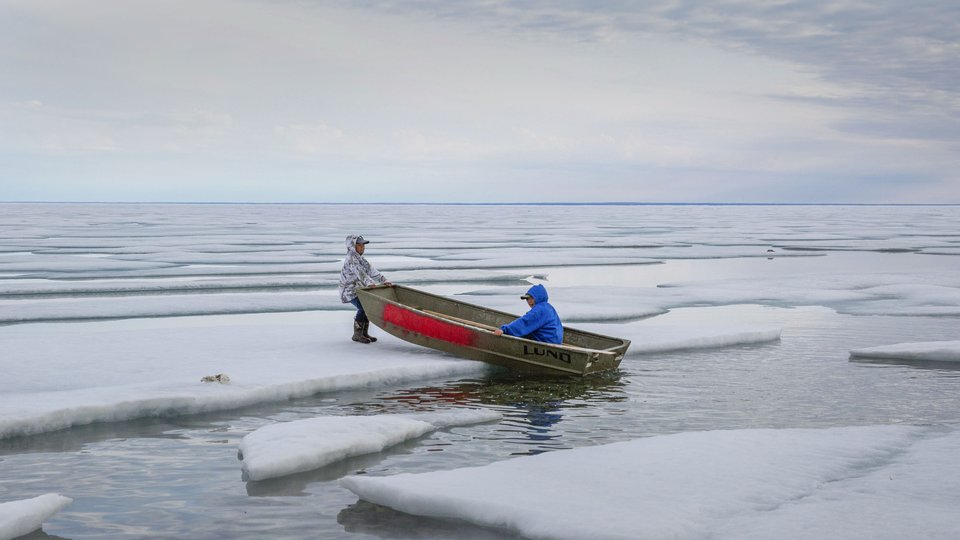
very mid-September, the extent of Arctic summer sea ice reaches its lowest point in the year. Like an enormous ice cube, the Arctic ice melts back under the summer sun, before expanding again in the deep freeze of winter.
There are many solid reasons to care about the state of Arctic summer sea ice, particularly since it’s been taking a beating from man-made global warming. Scientific observations – on land, sea and space – all show that the Arctic summer sea ice is on a long-term downward spiral. While the melt itself is a natural process, the degree to which the summer sea ice disappears is not: with record-high Arctic temperatures over the past few decades, Arctic ice is disappearing fast.
But we shouldn’t wait until the summer sea ice disappears to pay closer attention. Here are 5 reasons to care about it today:
Arctic summer sea ice is the canary in the coal mine for climate change. While scientific research confirms the reality of human-induced climate change, for many people its impact seems intangible and remote, at least for the present. But with sea ice, we can actually see the physical change in the Earth’s system. Less than 50 years ago the Arctic ocean was a frozen cap with only a marginal melt around the edges; fast forward to today, and anyone can see the difference. The top of the Earth is now a deep blue rather than white. Shrinking sea ice is a warning that the effects of global warming will be large-scale and tangible.
Arctic ice affects life as we know it. The reason civilization has progressed so fast over the past 10,000 years is because of a relatively stable climate, which enabled widespread agricultural production and the rise of cultures and empires. Arctic ice has played a regulating role in this story, albeit an unsung one. This is because the circulation of the world’s oceans – known as the Global Ocean Conveyor Belt, or GOCB – is driven by the production of dense water in the Arctic, a by-product of sea-ice formation. Without Arctic sea ice, the global climate will change dramatically, precipitating a new and much more challenging state for human development. For example, if the GOCB were to stop completely, northern Europe would be 5-10°C cooler, a temperature dip that would radically reduce agricultural yields.
The effects of Arctic sea change are coming to a city near you. While the streets of Sao Paolo, Sydney and Shanghai may seem an awfully long way from the North Pole, the fundamental connections between them are beginning to emerge. The science of “tele-connections” between the Arctic and the rest of the world is becoming a hot area of study simply because of the size of current and potential impacts. Extreme weather events, such as flooding, fires, storm surges, and heat waves – may be amplified by the loss of Arctic summer sea ice. While the research is not yet conclusive, it appears that changes in the ice could affect the jet stream and lead to more extreme weather events.
Arctic ice affects the global economy in a big way. While most of the world’s boardrooms are not routinely paying attention to Arctic change (except in the fishing, shipping or oil-extraction industries), the economic effects may be immense. Research suggests that the melt will have significant economic costs for the global agricultural industry (because of changing global precipitation patterns) and the global insurance industry (because of the rise of insured losses caused by extreme weather events), as well as many others.
What happens in the Arctic doesn’t stay in the Arctic. Just like the Amazon can be described as the “lungs of the world”, the Arctic acts as a crucial part of the Earth’s atmospheric and oceanographic circulatory system. Arctic ice regulates global climate, including the distribution of heat, and patterns of rainfall or snowfall. As climate change progresses and Arctic summer sea ice continues to melt to unprecedented levels, abnormal weather effects will undoubtedly be felt far from the Arctic Circle.
And that brings us back to the annual minimum. The past eleven years have seen the lowest extents of summer sea ice on record. In 10 years (or at some slightly later date) there is no question that people who are born today will see an ice-free Arctic in their lifetime. And that means trouble. The Arctic ice is a slow train wreck coming down the track for us all.
Gail Whiteman is Director of the Pentland Centre for Sustainability in Business and the creator of Arctic Basecamp, a group of intrepid Arctic scientists dedicated to bringing the message of global risks from Arctic change to the world’s top decision-makers.
Jeremy Wilkinson is a sea ice physicist with the British Antarctic Survey and co-organizer of Arctic Basecamp.
A version of this article was originally published by the World Economic Forum and updated in July 2018.





